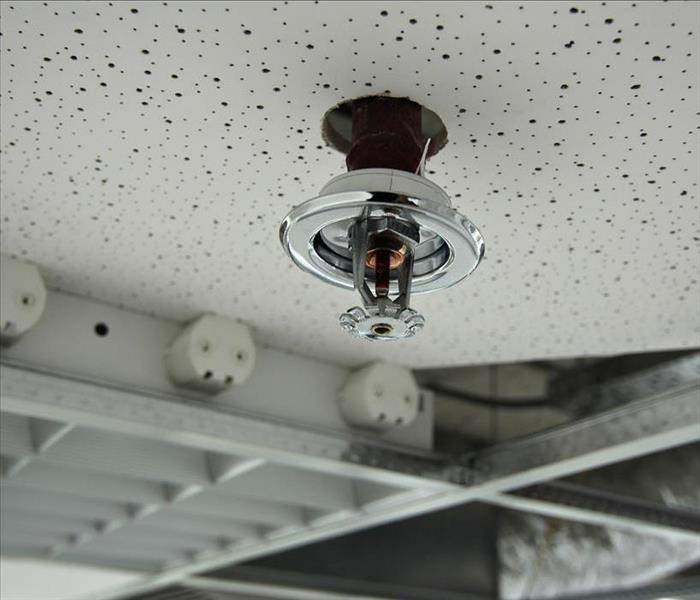The Basic Workings of Fire Sprinklers
3/26/2021 (Permalink)
Fire sprinkler systems are required in commercial and residential buildings; you've probably noticed the sprinkler heads on the ceiling. They're invaluable fire suppression tools for protecting lives, structures and contents. Most people don't know exactly how fire sprinklers work, though.
Basics of Fire Sprinklers
Here are a few of the basics:
1. There Are Different Types of Sprinkler Pipe Systems
There are two main types of pipe systems. A wet pipe system keeps water pressurized in the pipes. The water is immediately released when a sprinkler head is activated. In a dry pipe system, pressurized air, not water, is collected in the pipes. Therefore, when a sprinkler head is activated, the air is released from the lines. This release of air allows the water to flow through the pipes.
2. Sprinklers Detect Heat, Not Smoke
Many people think smoke triggers fire sprinkler heads, but this isn't true. They are actually triggered by extreme heat. The fire heats the air above the flames quickly as the air flows across the ceiling. Fire sprinklers are typically designed to activate when the heat reaches 135 - 165 degrees.
3. Sprinkler Heads Activate Individually
Sprinkler heads activate individually, so only the ones in the fire's high temperature will activate (it could be one or multiple heads). They're designed this way to minimize water damage. Typically only one or two sprinklers are needed during a fire. This normally either stops the fire entirely or controls it until the fire department arrives.
4. Sprinklers Must Be Turned Off Manually
The sprinkler system has to be manually turned off at the main fire riser to stop the water flow. This riser is where the sprinkler system pipes connect to the building's main water supply. Water damage remediation professionals will be necessary to complete the fire sprinkler cleanup. Then, the activated sprinklers will have to be replaced.
The fire sprinkler system in your Colorado Springs, CO, building could make the difference between saving the building and its contents or sustaining a total loss. Now you know a little more about how these systems work.



 24/7 Emergency Service
24/7 Emergency Service
